4
Rosario García-Huidobro ● Profesora Asistente
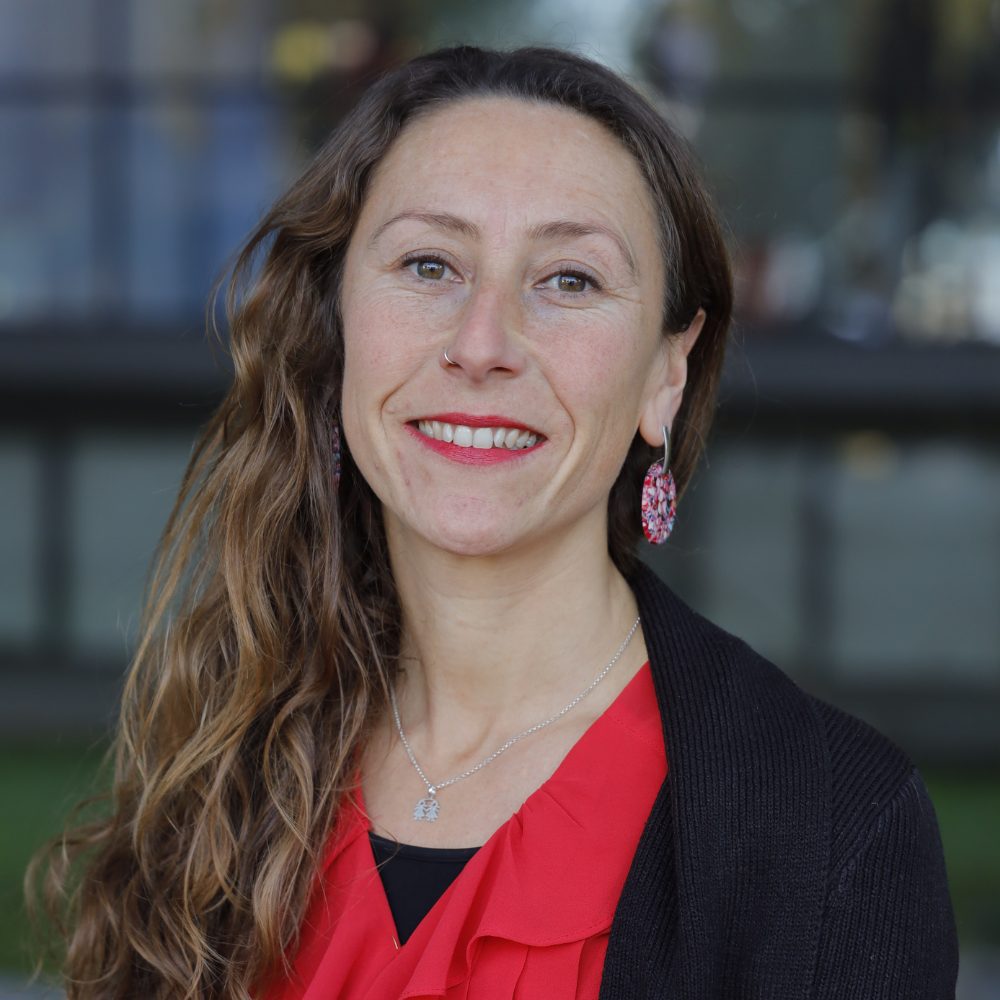
Doctora en Artes y Educación, Universidad de Barcelona.
Licenciada en Artes Visuales, Pontificia Universidad Católica de Chile.
Descripción
Sus líneas de investigación son la subjetividad y desarrollo profesional de artistas-docentes, las prácticas artísticas de mediación en contextos sociales y educativos, y el enfoque de género en las relaciones sociales. Se ha desempeñado como investigadora en diversos proyectos interdisciplinares en I+D y de creación artística, para fortalecer el rol e impacto de las artes en los contextos comunitarios y educativos, desde una perspectiva crítica y feminista.
Cristian Leyton Navarro ● Profesor Asistente
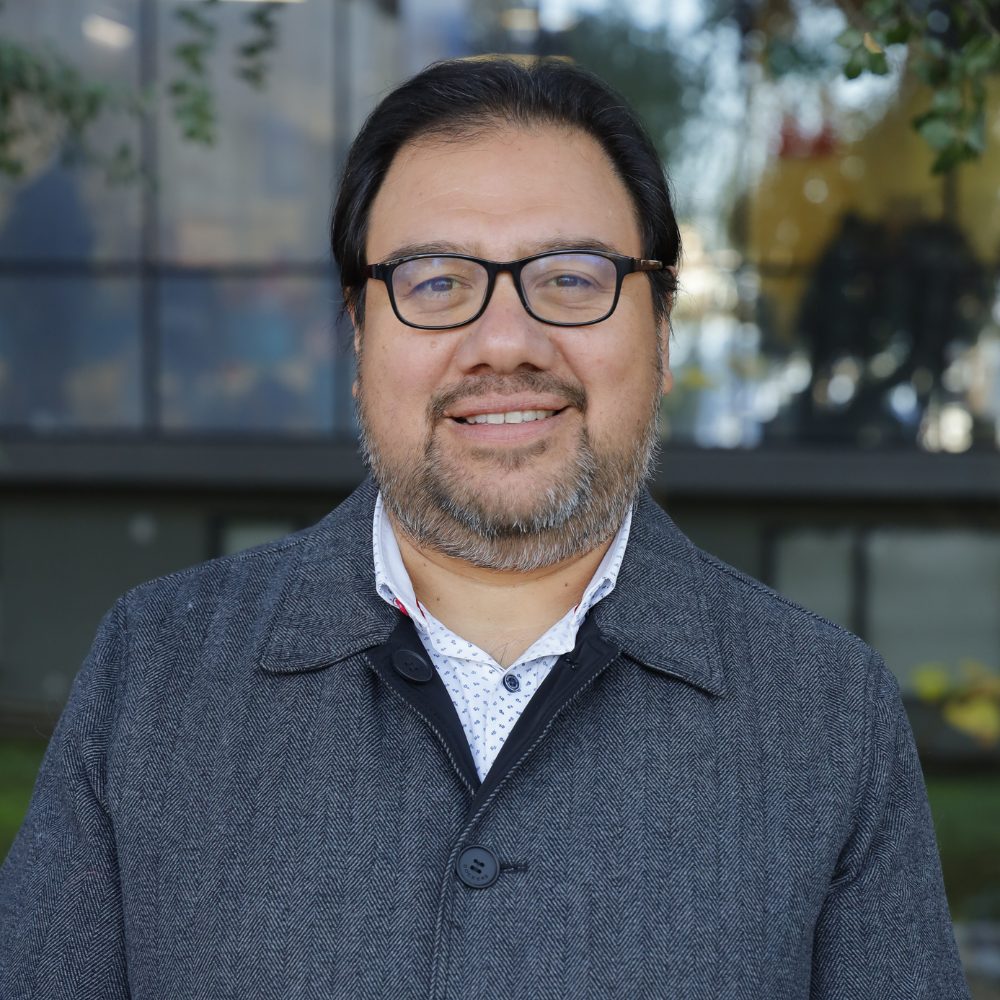
PhD en Política Social, Escuela para Estudios de Políticas de la Universidad de Bristol (Reino Unido).
Trabajador Social, Pontificia Universidad Católica de Chile.
Descripción
Cristian Leyton Navarro, además de ser académico del ICSo, es Profesor del Magíster en Gestión y Políticas Públicas (MGPP) del Departamento de Ingeniería Industrial de la Universidad de Chile. Posee una amplia experiencia como investigador y docente de programas de pregrado, magíster y doctorado en diversas universidades nacionales.
Previamente, ha sido Investigador Principal en RIMISP y se ha desempeñado en diferentes instituciones públicas, a la vez que posee experiencia como consultor de organizaciones no gubernamentales y organismos internacionales como Banco Interamericano de Desarrollo (BID), Organización de las Naciones Unidas para la Alimentación y la Agricultura (FAO), Fondo de las Naciones Unidas para la Infancia (UNICEF), Banco de Desarrollo de América Latina (CAF), entre otros.
Editor de REPP - Revista Estudios de Políticas Públicas. Es autor de diversos artículos y capítulos de libros en revistas y libros nacionales e internacionales. Recientemente editó y escribió varios capítulos en el libro “Implementación de políticas sociales en Chile” (2024).
Sus áreas de interés son: implementación de políticas, descentralización y desigualdad territorial, gobiernos subnacionales (regionales y locales), burocracia a nivel de calle, pobreza y exclusión social.
cristian.leyton@uoh.cl
Gabriela Guevara-Cué ● Profesora Asistente
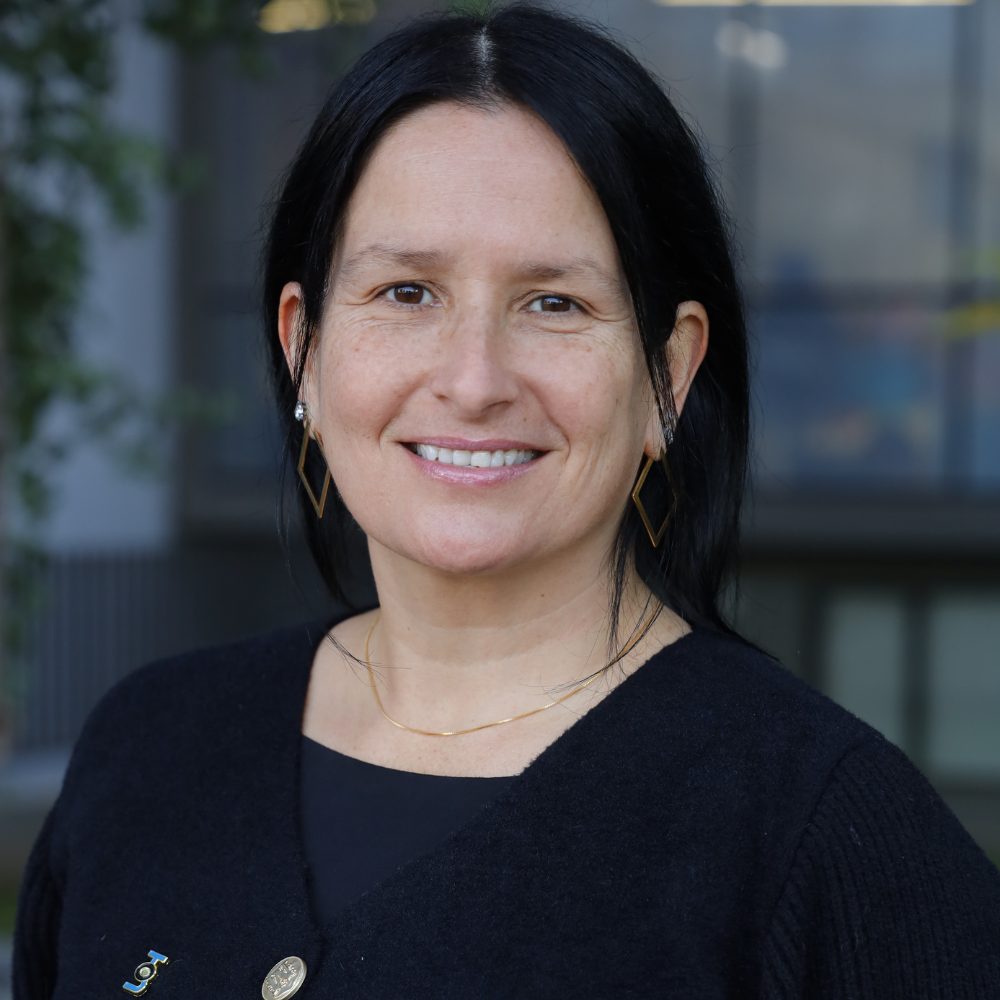
Dra. en Territorio, Espacio y Sociedad, Universidad de Chile.
Geógrafa, Universidad de Chile.
Descripción
Gabriela Guevara-Cué es Profesora Asistente del Instituto de Ciencias Sociales de la Universidad de O’Higgins e Investigadora de la línea Ciudades Justas del Centro de Desarrollo Urbano Sustentable (CEDEUS; Centro ANID-FONDAP); Investigadora colaboradora de la línea Ciudades Resilientes del Centro de Ciencia del Clima y la Resiliencia (CR2; Centro ANID-FONDAP); facilitadora del Grupo de Trabajo (2023-2025) Desigualdades, estructura social y políticas de la línea Desigualdades y pobreza en América Latina y el Caribe del Consejo Latinoamericano de Ciencias Sociales (CLACSO) y miembro de la Red Latinoamericana de IPPA (International Public Policy Association.
Gabriela es Licenciada en Geografía, Geógrafa, Magíster en Gestión y Políticas Públicas y Doctora en Territorio, Espacio y Sociedad por la Universidad de Chile.
Anteriormente, se desempeñó como investigadora postdoctoral de la Línea Ciudades Justas Centro de Desarrollo Urbano Sustentable (CEDEUS; Centro ANID-FONDAP); Coordinadora de Transformación del Centro de Ciencia del Clima y la Resiliencia (CR2; Centro ANID-FONDAP) y como consultora nacional e internacional.
Sus áreas de interés son: gestión y políticas públicas, geografía, justicia espacial y cambio climático, derechos económicos y sociales y territorio, además de la creación de valor con pertinencia territorial y desarrollo sustentable.
2
4
2
- REVISTA GeoJournal
- 2024
Revealing spatial (in)justice: exploring the dynamics of triple spatiality in Chile and its impact on the generation of spatial barriers to social rights
• Gabriela Andrea Guevara Cue
- REVISTA Revista de Geografía Norte Grande
- 2024
La incompleta y renuente descentralización chilena: Un análisis multiescalar del sistema político-administrativo y sus recientes transformaciones
• Miguel Contreras • Gabriela Andrea Guevara Cue • Marcelo Cárdenas
- REVISTA Geoscience
- 2023
Geodynamic Hotspots in a Periglacial Landscape: Natural Hazards and Impacts on Productive Activities in Chilean Fjordlands, Northern Patagonia
• Gabriela Andrea Guevara Cue
- REVISTA Revista Estudios de Políticas Públicas
- 2016
Innovación en Chile como aporte a la democratización de los servicios: análisis del caso de Gendarmería de Chile
• Gabriela Andrea Guevara Cue
- Chile -
Seguridad Hídrica en Chile: Caracterización y Perspectivas de Futuro
- Chiie -
“Marea roja” y cambio global: elementos para la construcción de una gobernanza integrada de las Floraciones de Algas Nocivas (FAN)
- El Uruguay desde la sociología XX
- 2023
Estudio de casos sobre siete localidades corporativas en el Uruguay del siglo XX
- Territorios, bienestar y migración: Uruguay en la primera mitad del siglo XX
- 2023
Necesidades humanas, bienestar y sectores de provisión pública: un marco teórico para su estudio
- Estado, poblamientos y estructura social: Uruguay desde la colonia al siglo XX
- 2022
Localidades corporativas
- Las ciudades ante el Covid-19: Nuevas direcciones para la investigación urbana y las políticas públicas.
- 2020
Justicia espacial y habitar digno. La pandemia como punto de partida para una nueva generación de políticas públicas territoriales.
gabriela.guevara@uoh.cl
Karina Cerda Oñate ● Profesora Asistente
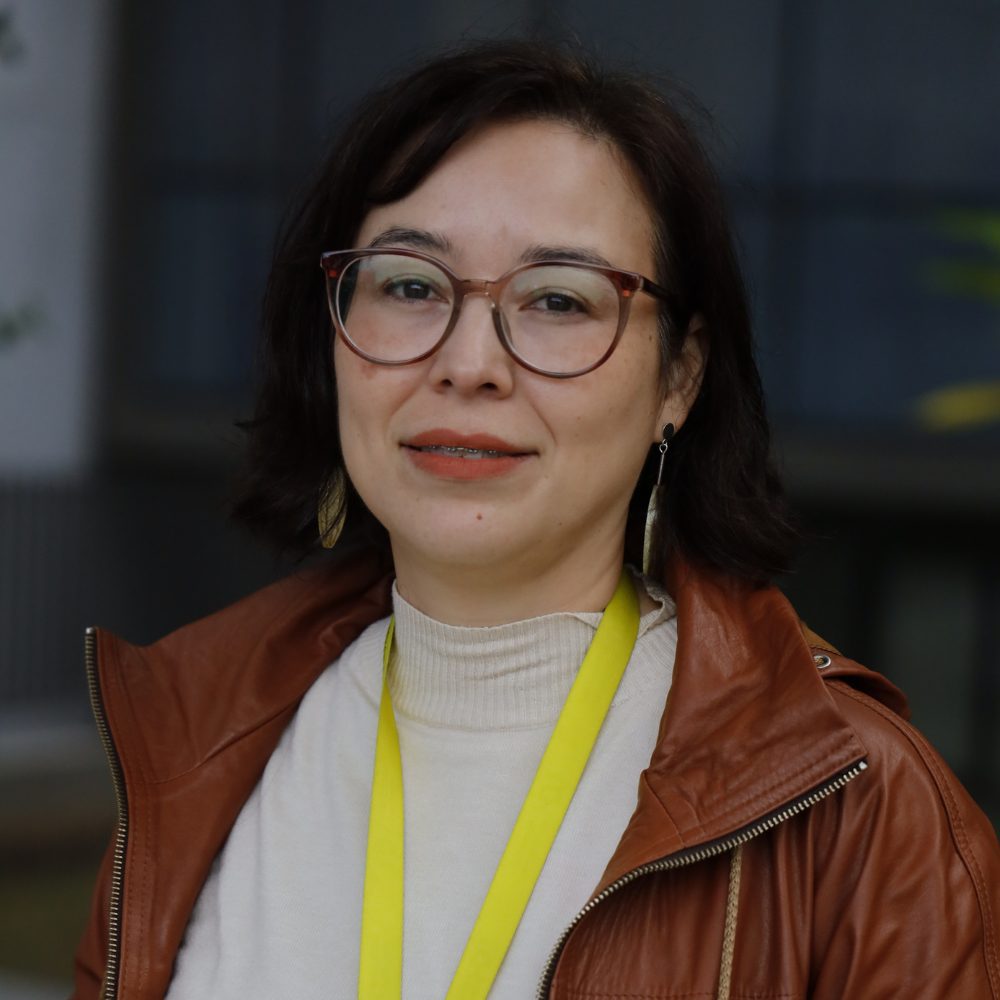
Doctora en Lingüística, Pontificia Universidad Católica de Chile.
Traductora Inglés-Portugués, Universidad de Santiago de Chile.
Descripción
La doctora Karina Cerda Oñate es lingüista. Sus intereses de investigación se centran en la enseñanza-aprendizaje de lenguas extranjeras. Particularmente, Karina ha investigado sobre la enseñanza-aprendizaje del español y el inglés como lenguas extranjeras respecto de su desarrollo lingüístico y de las políticas públicas asociadas a la enseñanza-aprendizaje de lenguas extranjeras en Chile. La doctora Cerda Oñate ha publicado en revistas académicas nacionales e internacionales y es miembro de la Sociedad Chilena de Lingüística (SOCHIL).
19
4
1
- REVISTA Eurasian Journal of Applied Linguistics
- 2025
Impact of Explicit and Implicit Instruction on EFL Learners Segmental Pronunciation Accuracy of Transparent and Non-Transparent Words
• Karina Ester Cerda Oñate • Trinidad Cisterna • Fernanda Norambuena
- REVISTA Forum for Linguistic Studies
- 2025
L2 Pronunciation Instruction: A Proposal Considering Nativeness in the Field of L2 Linguistics
• Karina Ester Cerda Oñate • María Ignacia Urtubia-Vergara
- REVISTA Journal of Librarianship and Information Science
- 2024
An understanding of school libraries within the technical vocational education and training system: Chile’s CRA school libraries
• Fernando Bolaños • Ola Pilerot • Karina Ester Cerda Oñate • Miguel Ángel Cerna
- REVISTA Neofilolog
- 2024
On the effects of L2 aptitude, phonological short-term memory, and L2 motivation on L2 listening performance
• Mauricio Véliz-Campos • Karina Ester Cerda Oñate • Adriana Biedro? • Cristian A. Rojas-Barahona • Leonardo Veliz
- REVISTA El Guiniguada
- 2024
Propuestas de formación inicial docente para aulas multilingües en la escuela chilena
• Gloria Macarena Toledo Vega • Karina Ester Cerda Oñate • Andrea Lizasoain
- REVISTA Literatura y lingüística
- 2024
Desarrollo de interlengua en escolares secundarios haitianos: estudio de caso de una escuela en Chile
• Gloria Toledo • Karina Ester Cerda Oñate • Francisco Quilodrán Peredo
- REVISTA DELTA: Documentação de Estudos em Lingüística Teórica e Aplicada
- 2023
Factores relevantes para la evaluación de la producción escrita de estudiantes haitianos no hispanohablantes en la escuela pública chilena
• Gloria Toledo Vega • Andrea Lizasoain • Karina Ester Cerda Oñate
- REVISTA Estudios Filológicos
- 2023
Competencia interpragmática: enseñanza y actitudes hacia la enseñanza de la competencia interpragmática en el aula de lenguas extranjeras
• Karina Ester Cerda Oñate • María Ignacia Urtubia Vergara • Gabriel Pairicán T. • Francisco Antonio Nocetti
- REVISTA Literatura y lingüística
- 2023
THE ROLE OF THE TARGET LANGUAGE IN SOCIAL IMMERSION OF HAITIAN IMMIGRANTS IN CHILE AND EDUCATORS’ BELIEFS ABOUT ITS TEACHING AND LEARNING*
• Gloria Toledo • Karina Ester Cerda Oñate • Andrea Lizasoain
- REVISTA Lengua y migración
- 2023
Alfabetización escolar en aprendientes de lenguas adicionales no alfabetizados: aspectos sociales, cognitivos, lingüísticos y pedagógicos
• Gloria Toledo Vega • Francisco Quilodrán Peredo • Karina Ester Cerda Oñate
- REVISTA Journal of Teacher Education and Educators
- 2022
Preservice and inservice teachers language ideologies about non-Spanish-speaking students and multilingualism in Chilean classrooms
• Karina Ester Cerda Oñate • Gloria Toledo Vega • Andrea Lizasoain
- REVISTA Boletín de filología
- 2022
Formación Inicial Docente, currículum y sistema escolar: ¿cuál es el lugar de los niños y adolescentes inmigrantes no hispanohablantes en el sistema educativo chileno?
• Gloria Toledo Vega • Karina Ester Cerda Oñate • Andrea Lizasoain
- REVISTA Logos: Revista De Lingüística, Filosofía Y Literatura
- 2022
Haitian Immigrant Students’ Access and Linguistic Inclusion in Chilean Schools
• Gloria Toledo Vega • Andrea Lizasoain • Karina Ester Cerda Oñate
- REVISTA Speech Communication
- 2021
Speech rhythm convergence in a dyadic reading task
• Karina Ester Cerda Oñate • Gloria Toledo Vega • Mikhail Ordin
- REVISTA DELTA: Documentação de Estudos em Lingüística Teórica e Aplicada
- 2021
Factores relevantes para la evaluación de la producción escrita de estudiantes haitianos no hispanohablantes en la escuela pública chilena
• Gloria Toledo Vega • Andrea Lizasoain • Karina Ester Cerda Oñate
- REVISTA Onomázein Revista de lingüística filología y traducción
- 2019
Comprensión lectora, estilos atribucionales, estrategias cognitivas y de autorregulación e inteligencia lógica: Predictores del rendimiento académico general y en lenguaje de estudiantes de establecimientos educativos de alta vulnerabilidad social
• Gamal Cerda Etchepare • Karina Ester Cerda Oñate • Omar Salazar Provoste • Bernardo Riffo
- REVISTA Calidoscópio
- 2017
Uso y adquisición de pronombres personales átonos en lusohablantes y angloparlantes, aprendientes de ELE
• Karina Ester Cerda Oñate • Gloria Toledo Vega • Natalia Möller
- REVISTA Boletín de filología
- 2016
Propuesta de un diseño de investigación mixto para el estudio del ritmo en diferentes variedades dialectales del español
• Karina Ester Cerda Oñate
- REVISTA Onomázein Revista de lingüística, filología y traducción
- 2015
Variación diatópica, discursiva y fonética de /s/ codal en el habla de profesionales chilenos
• Karina Ester Cerda Oñate • Darío Fuentes-Grandón • Jaime Soto-Barba • Nahida Hamdan Rosales
- 1240667
- Marzo 2024 - Marzo 2027
Descripción y progresión de los significados ideacionales representados en los libros escolares de inglés
- 1221032
- Marzo 2022 - Marzo 2025
Medición del efecto del habla sincronizada en la inteligibilidad y la comprensibilidad en aprendientes de inglés como lengua extranjera
- 1220209
- Marzo 2022 - Marzo 2026
On the effects of implicit and explicit corrective feedback on perception and production of English sentence accent and (post)nuclear intonation as moderated by L2 foreign language aptitude, working memory and musical ability
- 1190254
- Diciembre 2020 - Marzo 2023
Desarrollo de interlengua en estudiantes secundarios haitianos
- Lingüística del castellano chileno: Estudios sobre variación, innovación, contacto e identida
- 2021
El habla sincronizada como dispositivo para la producción del ritmo del español como L2
karina.cerda@uoh.cl
María Paz Trebilcock Gac ● Profesora Asistente
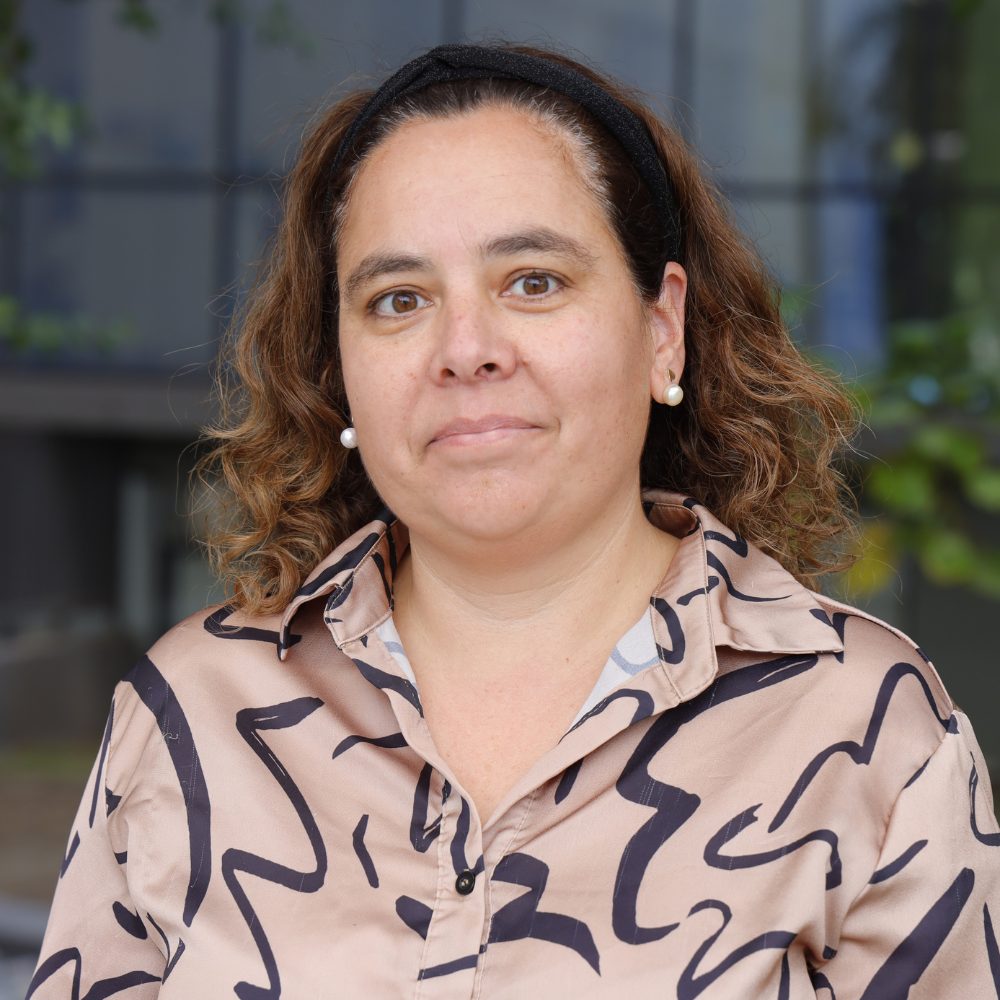
Doctora en Sociología, Pontificia Universidad Católica de Chile.
Licenciada en Sociología, Pontificia Universidad Católica de Chile.
Descripción
María Paz es Dra. en Sociología por la Pontifica Universidad Católica de Chile. Sus líneas de investigación se enmarcan en la sociología urbana, específicamente en estudios de desigualdades territoriales, abordando temáticas como pobreza urbana, segregación residencial, vivienda social, gentrificación, entre otros.
Desde el año 2021 es investigadora Adjunta del Instituto Violencia y Democracia (Viodemos).
Se ha desempeñado como IR y coinvestigadora en diversos fondos concursables ANID como Fondecyt y Anillos.
En su experiencia en docencia destaca por su experiencia en los cursos de métodos de la investigación, estadísticas, seminarios de tesis, entre otros
3
- 11220807
- Marzo 2022 - Julio 2025
Acceso a la vivienda en tiempos de crisis: estrategias de acceso al suelo de los pobres urbanos en Santiago de Chile
- COVID0476
- Julio 2020 - Noviembre 2021
Variabilidad geográfica del impacto por déficit o postergación de atenciones hospitalarias para enfermedades crónicas frente a la pandemia COVID-19
- 1190874
- Marzo 2019 - Marzo 2022
Variabilidad geográfica en el acceso a la atención hospitalaria en Chile
maria.trebilcock@uoh.cl
Felipe Velásquez-Ruiz ● Investigador Postdoctoral

Doctor en Ciencias, mención en Geología, Universidad de Chile.
Ingeniero en Geología, Universidad Nacional de Colombia (Medellín, Colombia).
Descripción
Dr. Felipe Velásquez Ruiz es un geólogo altamente calificado de Medellín, Colombia, con un PhD en Ciencias con Mención Geología por la Universidad de Chile, y MSc en geoquímica y yacimientos minerales por la Universidad de Brasília. Su investigación se centra en dilucidar los mecanismos de formación de minerales críticos esenciales para la transición energética, particularmente en el contexto de sistemas magmáticos-(carbo)hidrotermales. Felipe posee una amplia experiencia en mapeo geológico regional, exploración greenfield y trabajado como profesor asistente y de cátedra, fomentando la difusión del conocimiento. Impulsado por un fuerte deseo de aprovechar la experiencia científica para el beneficio de la sociedad, Felipe está firmemente comprometido con la realización de investigaciones que tengan un impacto real.
- REVISTA Zeitschrift der Deutschen Gesellschaft für Geowissenschaften
- 2025
Emil Jakob Grosse (1880-1971) – a (nearly) forgotten German geologist and his traces in Colombia and Brazil
• Felipe Velásquez Ruiz • Marion Weber-Scharff • Federico Cuadros-Jimenez • Heinz-Gerd Röhling
- REVISTA Journal of Geochemical Exploration
- 2024
Microanalytical investigation of K-rich fenites from the Catalão II alkaline-carbonatite complex in Central Brazil: Implications for ore-forming processes within the world’s largest niobium province
• Felipe Velásquez Ruiz • Martin Reich • Pedro Cordeiro • Leonardo Lagoeiro • Thomas Angerer
- REVISTA Geochimica et Cosmochimica Acta
- 2023
Origin of carbonatite-related niobium deposits: Insights from pyrochlore geochemistry
• Felipe Velásquez Ruiz • Martin Reich • Sam Broom-Fendley • Charles D. Beard • Fernando Barra
- REVISTA Revista de la Academia Colombiana de Ciencias Exactas, Físicas y Naturales
- 2023
Deciphering the footprint of Emil Grosse from Germany to Brazil: a brief review
• Felipe Velásquez Ruiz • Marion Weber Scharff • Federico Cuadros Jimenez
- REVISTA International Geology Review
- 2022
The genetic link between kamafugite magmatism and alkaline-carbonatite complexes in the Late Cretaceous Alto Paranaíba Igneous Province, Central Brazil
• Felipe Velásquez Ruiz • Pedro Cordeiro • Martin Reich • João Gabriel Motta • Carlos Cordeiro Ribeiro
- REVISTA Earth Sciences Research Journal
- 2022
Modeling of the large Miocene epithermal and porphyry gold deposits of Colombia using Monte Carlo simulations
• Felipe Velásquez Ruiz • Juan Camilo Martínez • Alejandra Tobón Acevedo • Alejandra Yepes Metaute • Angélica María Zapata
- REVISTA Precambrian Research
- 2018
The 3.5 Ga São Tomé layered mafic-ultramafic intrusion, NE Brazil: Insights into a Paleoarchean Fe-Ti-V oxide mineralization and its reworking during West Gondwana assembly
• Felipe Velásquez Ruiz
- SA19I0106
- Abril 2025 - Marzo 2028
Determination of magma fertility and sulfide saturation for giant porphyry copper deposits in central Chile: A platinum-group element perspective
felipe.velasquez@uoh.cl
Carlos Sepúlveda Guzmán ● Profesor Asistente
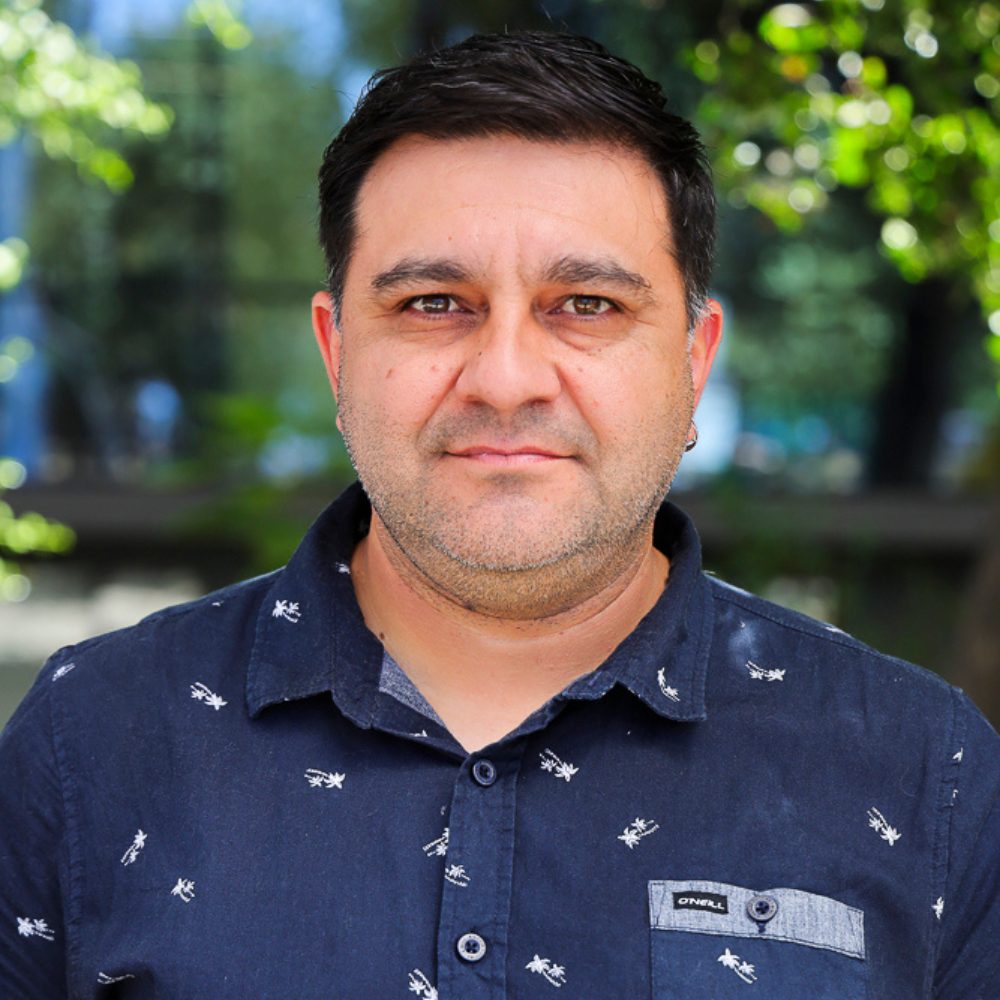
Doctor en Nutrición y Alimentos, Universidad de Chile.
Profesor de Educación Física, Universidad de Playa Ancha.
Descripción
Carlos Sepúlveda Guzmán es Profesor de Educación Física de la Universidad de Playa Ancha y Doctor en Nutrición y Alimentos de la Universidad de Chile. Realizó su postdoctorado en el Instituto de Nutrición y Alimentos de la Universidad de Chile. Actualmente es Profesor Asistente en el Instituto de Ciencias de la Salud de la Universidad de O’Higgins.
La línea de investigación del Dr. Sepúlveda está enfocada en dos aspectos: a) Estudiar el papel que juega el ejercicio físico sobre la prevención y tratamiento de enfermedades relacionadas a la obesidad con énfasis en músculo esquelético e hígado; b) Desarrollar herramientas de bajo costo y fácil aplicación para la valoración del rendimiento humano en contextos clínicos.
13
3
2
- REVISTA Scientific Reports
- 2025
Validity and reliability of the step test to estimate maximal oxygen consumption in pediatric population
• Gerardo Weisstaub • José González Farías • Ignacio Orizola • Juan Borquez • Matías Monsalves-Álvarez
- REVISTA Molecular and Cellular Biochemistry
- 2024
Folate induces stemness and increases oxygen consumption under glucose deprivation by notch-1 pathway activation in colorectal cancer cell
• Juan Rodríguez • Matías Monsalves-Álvarez • Carlos Andrés Sepúlveda Guzmán • Camila Donoso-Barraza • Rodrigo Troncoso
- REVISTA Journal of Functional Morphology and Kinesiology
- 2024
Cycling Isokinetic Peak Force Explains Maximal Aerobic Power and Physiological Thresholds but Not Cycling Economy in Trained Triathletes
• Felipe Giancaspero • Carlos Burgos-Jara • Carlos Andrés Sepúlveda Guzmán • Danni Haichellis • Roberto Meneses-Valdés
- REVISTA Biological Research
- 2023
The CB1 cannabinoid receptor regulates autophagy in the tibialis anterior skeletal muscle in mice
• Carlos Andrés Sepúlveda Guzmán • Juan Manuel Rodriguez • Matías Monsalves Álvarez • Camila Donoso-Barraza • Francisco Pino-de la Fuente
- REVISTA Frontiers in Nutrition
- 2023
High-intensity interval training prevents muscle mass loss in overweight Chilean young adults during a hypocaloric-Mediterranean diet: a randomized trial
• Matías Monsalves Álvarez • Teresa Jimenez • Daniel Bunout • Gladys Barrera • Sandra Hirsch
- REVISTA BMJ Open Sport & Exercise Medicine
- 2023
Next steps to advance general physical activity recommendations towards physical exercise prescription: a narrative review
• Raúl Festa • Emilio Jofré Saldía • Alejandro Candia • Matías Monsalves Álvarez • Marcelo Alejandro Flores Opazo
- REVISTA Food and Chemical Toxicology
- 2022
Hydrogen sulfide disrupts insulin-induced glucose uptake in L6 skeletal muscle cells
• Camila Donoso-Barraza • Juan Borquez • Carlos Andrés Sepúlveda Guzmán • Francisco Díaz-Castro • Claudia Sepulveda-Quiñenao
- REVISTA Sports Medicine Open
- 2021
Modified Talk Test: A randomised cross-over trial investigating the comparative utility of two "Talk Test" for determining aerobic training zones in overweight and obese patients
• Ignacio Orizola-Cáceres • Hugo Cerda-Kohler • Carlos Burgos-Jara • Roberto Meneses-Valdés • Rafael Gutierrez-Pino
- REVISTA Nutrients
- 2020
?-Hydroxybutyrate Increases Exercise Capacity Associated with Changes in Mitochondrial Function in Skeletal Muscle
• Matías Monsalves Álvarez • Pablo Esteban Morales • Mauricio Castro-Sepulveda • Carlos Andrés Sepúlveda Guzmán • Juan Manuel Rodriguez
- REVISTA International Journal of Molecular Sciences
- 2020
Moderate Aerobic Exercise Training Prevents the Augmented Hepatic Glucocorticoid Response Induced by High-Fat Diet in Mice
• Jonatan Dassonvalle • Francisco Díaz-Castro • Camila Donoso-Barraza • Carlos Andrés Sepúlveda Guzmán • Francisco Pino-de la Fuente
- REVISTA Biochimica et Biophysica Acta (BBA) - Molecular and Cell Biology of Lipids
- 2019
Exercise regulates lipid droplet dynamics in normal and fatty liver
• Francisco Pino-de la Fuente • Laura Quezada • Carlos Andrés Sepúlveda Guzmán • Matías Monsalves Álvarez • Juan M. Rodríguez
- REVISTA International Journal of School Health
- 2019
HIITing Health in School: Can High Intensity Interval Training Be a Useful and Reliable Tool for Health on a School-Based Enviroment? A Systematic Review
• Rafael Zapata-Lamana • Igor Cigarroa Cuevas • Victor Fuentes • Claudio Soto Espindola • Eva Parrado Romero
- REVISTA Revista Brasileira de Medicina do Esporte
- 2014
Influência do exercício físico na cognição: uma atualização sobre mecanismos fisiológicos
• Carlos Merege • Cristiano Robles • Carlos Andrés Sepúlveda Guzmán • André dos Santos Costa • Antonio Herbert Lancha Junior
- Abril 2023 - Abril 2024
No Whey: Lácteos altos en proteína y ejercicio de resistencia para la mejora de la composición corporal y función muscular de personas mayores
- Marzo 2023 - Marzo 2024
La suplementación diaria con cuerpos cetónicos durante la recuperación de una lesión aguda previene la infiltración grasa y acelera la reparación muscular
- SA19I0106
- Enero 2020 - Diciembre 2023
Validación del Test del Escalón para medir la condición física en niños, niñas y adolescentes
- MEDICINA Y CIENCIAS APLICADAS AL FÚTBOL. CONMEBOL.
- 2022
Demandas bioenergéticas.
- MEDICINA Y CIENCIAS APLICADAS AL FÚTBOL. CONMEBOL.
- 2022
Evaluación básica y avanzada en el fútbol.
carlos.sepulveda@uoh.cl
Manuel Aranzubia Olasolo ● Investigador Postdoctoral
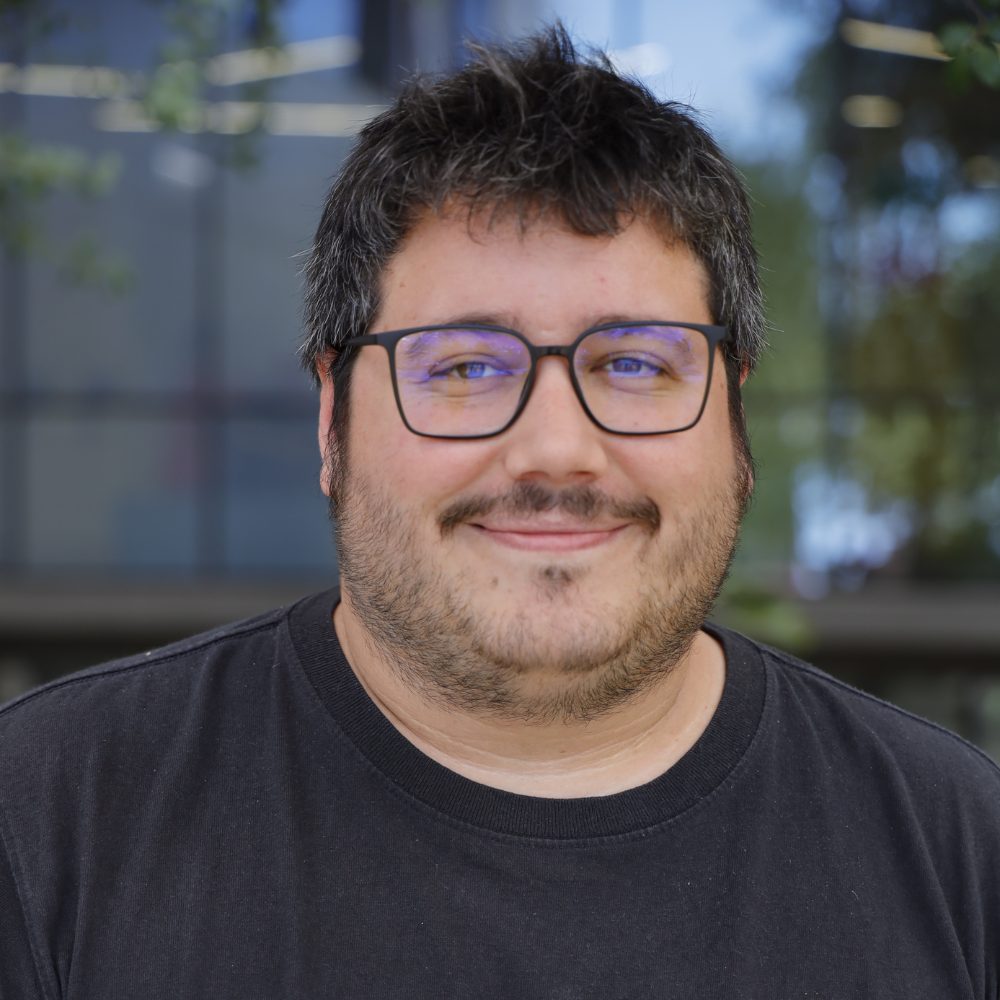
Doctor en Psicología, Euskal Herriko Unibertsitatea/Universidad del País Vasco (España).
Psicólogo, Euskal Herriko Unibertsitatea/Universidad del País Vasco (España).
Descripción
El investigador tiene más de seis años de experiencia examinando fenómenos del aprendizaje asociativo con el objetivo de comprender mejor cómo funciona el control contextual. Investiga cómo y cuándo el contexto influye en la adquisición/expresión del aprendizaje, centrándose en la investigación de estas cuestiones en humanos y en su aplicación en el campo clínico. Sus estudios se han centrado en el efecto de la preexposición, su relación con el contexto y las diferentes teorías que se han propuesto como mecanismo para explicar el efecto.
Carlos Rubilar Hernández ● Investigador Postdoctoral
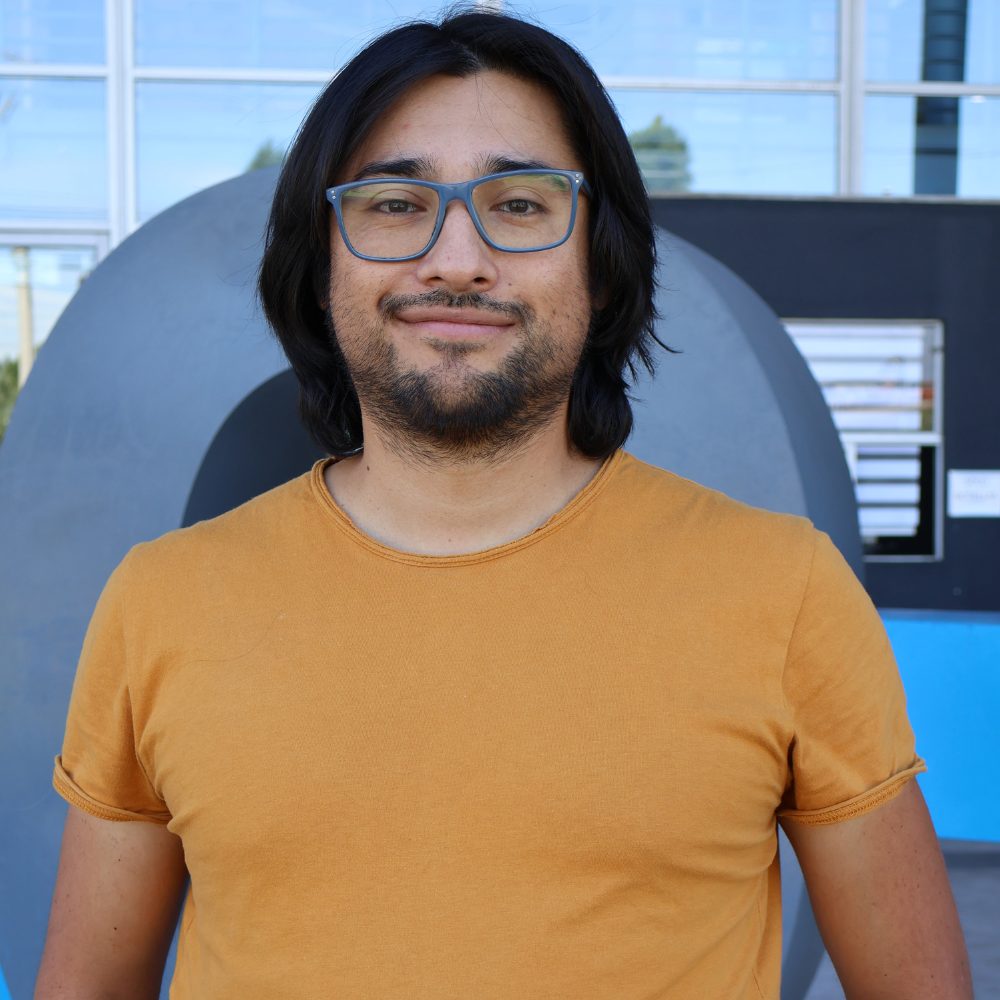
Doctor en Ciencias con mención en Biología molecular, celular y neurociencias, Universidad de Chile.
Ingeniero en Biotecnología molecular, Universidad de Chile.
Descripción
Ingeniero en Biotecnología molecular, Magister en ciencias Biológicas de la Universidad de Chile. Durante su formación doctoral, el Dr. Rubilar vinculó la formación de raíces laterales con componentes moleculares de naturaleza lipídica y su rol en tráfico de endomembranas en el modelo vegetal Arabidopsis thaliana. Con experiencia en el área de la fitopatología en especial en la prospección y detección molecular de fitopatógenos en especies de importancia agronómica en Chile; actualmente, la línea de su trabajo se enfoca en el área de la protección vegetal, en especial en la inmunidad e inducción de resistencia en plantas de importancia comercial. Prontamente, esta inducción de resistencia se reenfocará en evaluar su participación en el desarrollo de órganos vegetales en un contexto de estrés por falta de agua. Tiene experiencia en formulación de proyectos y elaboración de artículos científicos (10 artículos en revistas científicas, siendo tres de primer autor, y 2 capítulos de libro).
Mariela González ● Investigadora Postdoctoral
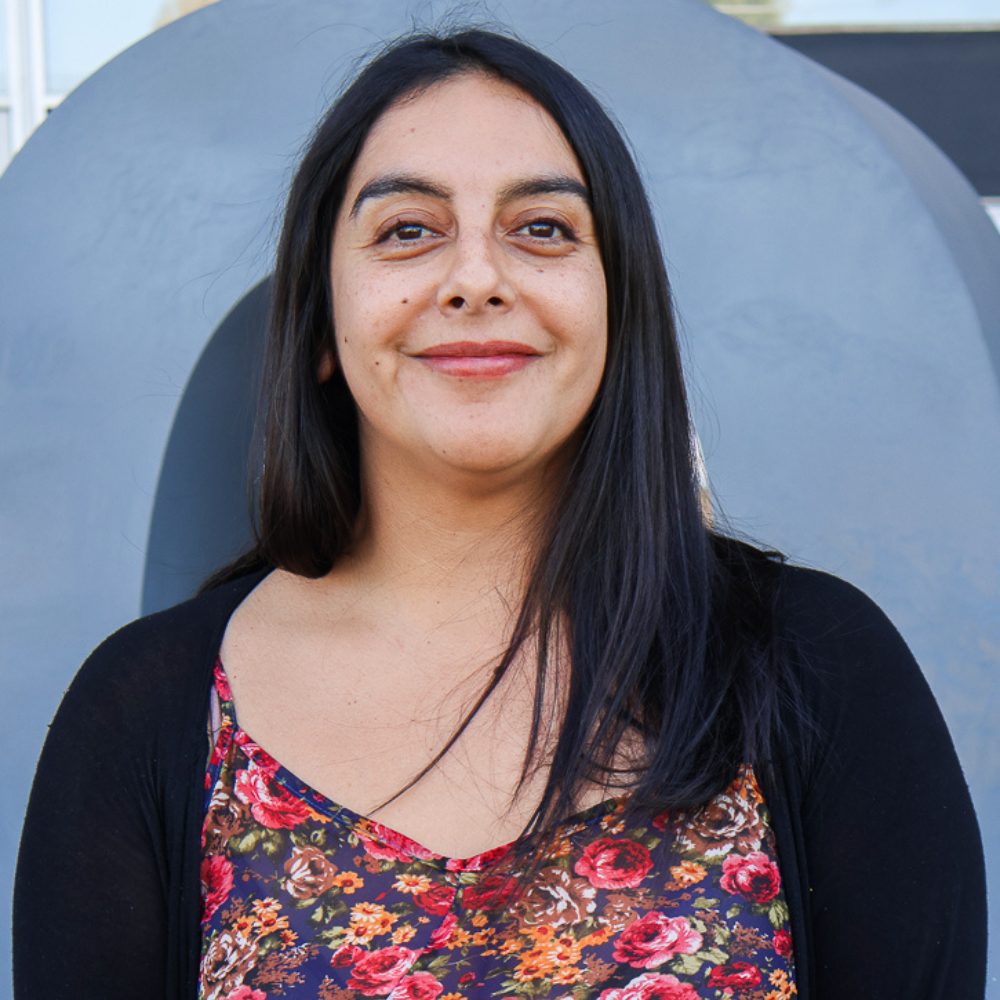
Doctora en Fitopatologia, Universidade Federal de Viçosa (Brasil).
Ingeniera en Biotecnología Vegetal, Universidad de Concepción.
Descripción
Investigadora Postdoctoral del Centro de Biología de Sistemas para la Sanidad Vegetal (BioSaV). Su línea de trabajo se centra en el estudio de la interacción planta-patógeno-microbioma con enfásis en análisis masivo de datos mediante machine learning.
Tiene experiencia en etiología y epidemiología espacio-temporal de cultivos agronómicos y forestales; diversidad genética y genómica de poblaciones de fitopatógenos y su evolución. Además, ha trabajado en ecología molecular de comunidades microbianas asociadas a enfermedades radiculares. Cuenta con ocho publicaciones de investigación en revistas de alto impacto, y un capítulo de libro.
- REVISTA Plant Pathology
- 2024
Uncovering the hidden hosts: Identifying inoculum reservoirs for <i>Phytophthora pseudosyringae</i> in <i>Nothofagus</i> forests in Chile
• Mariela Paz González Arriagada
- REVISTA agriRxiv
- 2024
Spatiotemporal dynamics of <i>Fusarium</i> wilt of banana caused by subtropical race 4.
• Mariela Paz González Arriagada
- REVISTA Plant Disease
- 2022
A Shift in Pathotype Diversity and Complexity of <i>Phytophthora sojae</i> in Brazil
• Mariela Paz González Arriagada
- REVISTA Forest Pathology
- 2022
Detection of <i>Phytophthora cinnamomi</i> on declining <i>Araucaria araucana</i> forests
• Mariela Paz González Arriagada
- REVISTA Forest Pathology
- 2018
Diversity of <i>Phytophthora</i> species in Valdivian rainforests and association with severe dieback symptoms
• Mariela Paz González Arriagada
- REVISTA Molecular Plant Pathology
- 2018
Genome sequencing of oomycete isolates from Chile supports the New Zealand origin of <i>Phytophthora kernoviae </i>and makes available the first <i>Nothophytophthora</i> sp. genome
• Mariela Paz González Arriagada
- REVISTA Forest Pathology
- 2017
<i>Phytophthora pseudosyringae</i> associated with the mortality of <i>Nothofagus obliqua</i> in a pure stand in central-southern Chile
• Mariela Paz González Arriagada
- REVISTA Persoonia - Molecular Phylogeny and Evolution of Fungi
- 2017
<i>Nothophytophthora</i> gen. nov., a new sister genus of <i> Phytophthora</i> from natural and semi-natural ecosystems
• Mariela Paz González Arriagada
- Fitopatologia no Brasil: um panorama de Norte à Sul
- 2020